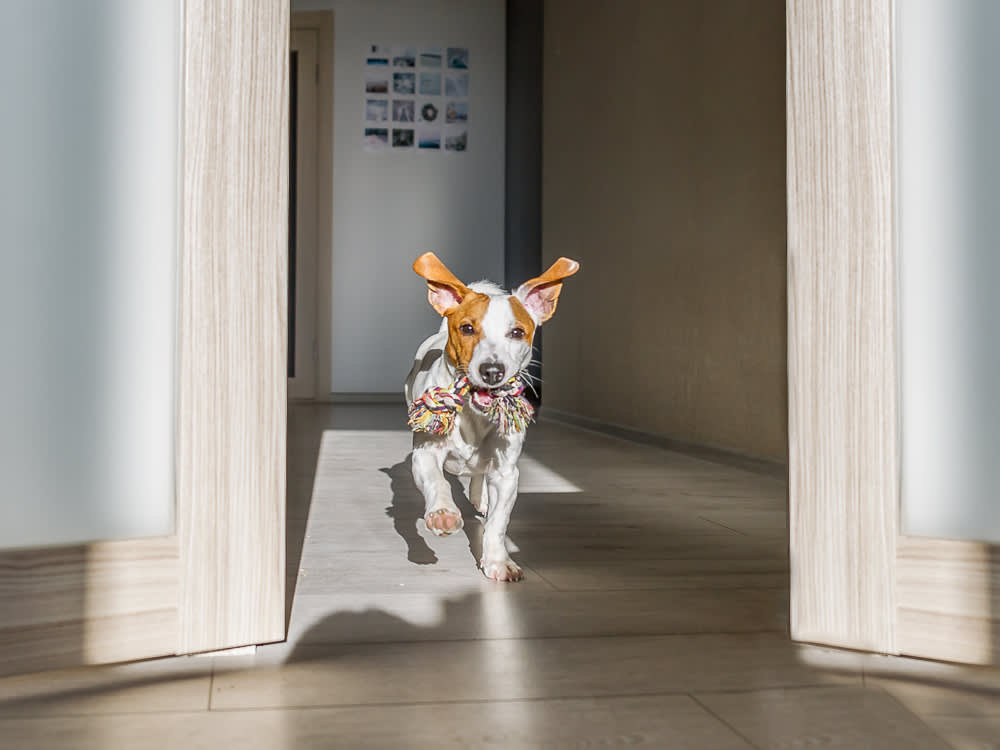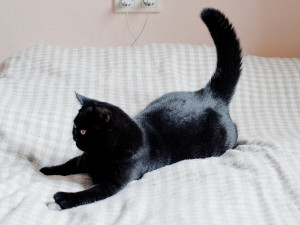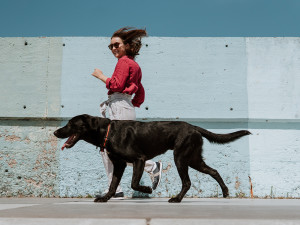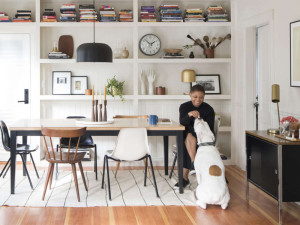6 Things to Know About Dog Zoomies
Not counting how fun they are to watch.

Share Article
Zoomies have been a part of my life far longer than Zoom meetings. I’ve enjoyed watching dogs do the zoomies in the yard or at the park, racing around an open space, as well as inside — leaping over the coffee table and running along the back of the couch. Zoomies are one of the most charming and entertaining of canine behaviors. But why do dogs get zoomies? Below, everything you need to know about dog zoomies.
1. There’s a technical term for the zoomies.
Scientifically speaking, zoomies are frenetic random activity periods, or ‘FRAPS.’ It has been theorized that FRAPsopens in new tab allow animals to relieve stress, let out stored up energy, and handle excitement and play — but the function of frapping is still unknown.
2. Zoomies involve furious bursts of speed.
Dogs with the zoomies will run in wide circles in a series of laps and may exhibit repetitive spins. They often break into a sprint suddenly; their back end tucked as they go; a wild, excited look in their eyes; and lots of sharp turns, spins, or sudden changes in direction.
3. There are a lot of precursors to the zoomies.
Zoomies can happen when dogs get revved up or aroused, when they go out after being inside for a while, when they see another dog, when their favorite person comes home, or in the snow. It’s also common following a few other circumstances: a bath, pooping, grooming, and being released from a crate or any other form of restraint.

4. Dog zoomies are normal.
There is nothing wrong with this normal dog behavior — as long as your dog doesn’t run around in a place that is unsafe, such as near a road or through a part of the yard with dangerous objects. Though zoomies are not problematic, sometimes dogs that chase their tails are mistaken for having the zoomies when they’re actually showing symptoms of obsessive-compulsiveness.
5. Zoomies don’t last long.
Most of the time, a case of the zoomies lasts less than a few minutes. Although they have been known to extend upwards of 10 minutes, that is not typical.
6. It’s difficult to stop dog zoomies, but not impossible.
It’s hard to stop a dog mid-zoom, so it is usually easiest to wait out these short-lived actions. You can redirect their motion by running away from them so they chase you to a safer spot if need be. Or, you can throw a toy in the direction you want a dog to go. The better your dog’s recall, the sooner they will come to you as their zoomies wind down. Whatever you do, don’t chase a dog with the zoomies as that will only add excitement to the moment and make it harder for your dog to calm down.

Karen B. London, PhD, CAAB, CPDT-KA
Karen B. London is a certified applied animal behaviorist (CAAB) and certified professional dog trainer (CPDT) who specializes in working with dogs with serious behavioral issues, including aggression. She has written for a variety of magazines including The Bark, Clean Run, and the APDT Chronicle of the Dog, and has published in scientific journals including Behavioral Ecology and Sociobiology, Ethology, Ecology, and Evolution, the Journal of Insect Behavior, and Insectes Sociaux. She is the author of seven books about dog training and canine behavior, including the forthcoming My Dog's Mystery Adventure: And Other Stories From a Canine Behaviorist and Dog Trainer.
Related articles
![black cat doing zoomies on a bed]()
Your Cat’s Erratic Zoomies — Explained
Fast, furious, and officially normal — according to a cat behaviorist.
![Owner and black dog running outside against blue backdrop]()
5 Running Games to Play With Your Dog
A few minutes — or even a few steps — are all you need to add joy to your dog’s day.
![A woman sitting at a dining room table with a dog.]()
House Dogge Makes Sustainability Feel Effortlessly Cool
Former Nike Design Director Angela Medlin on applying her streetwear savvy to eco-conscious pet products.
How to Manage Leash Reactivity in Your Dog
If your pup acts diabolical on walks, you are not alone. Here’s what you can do.





